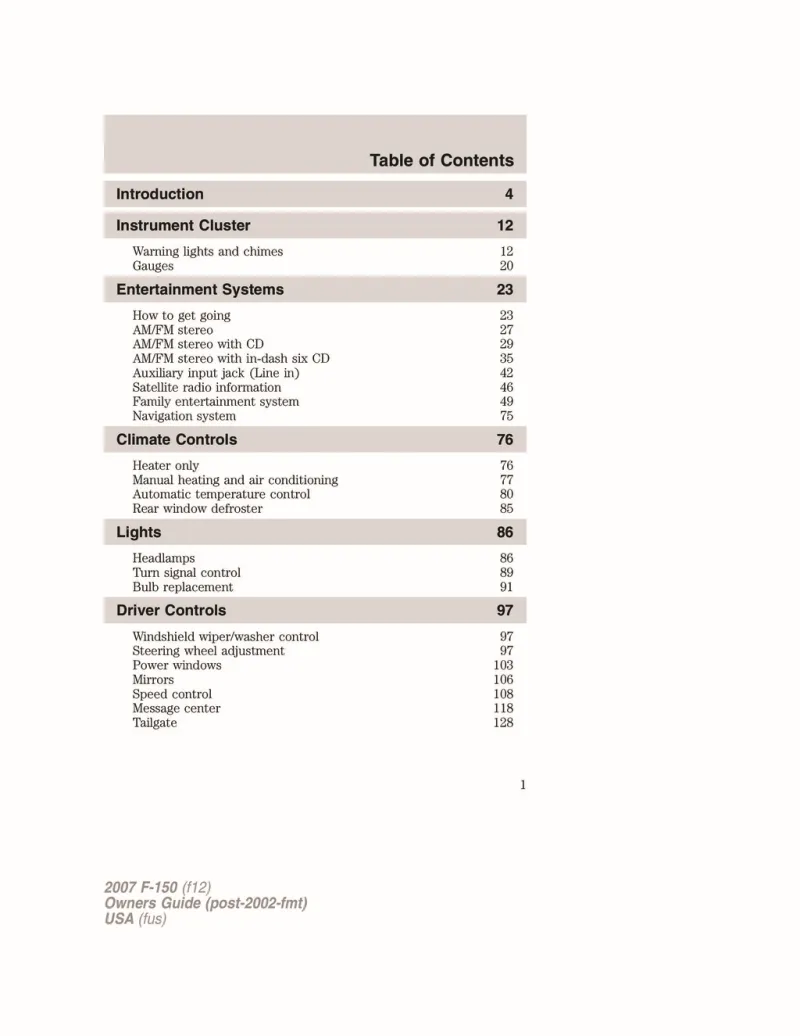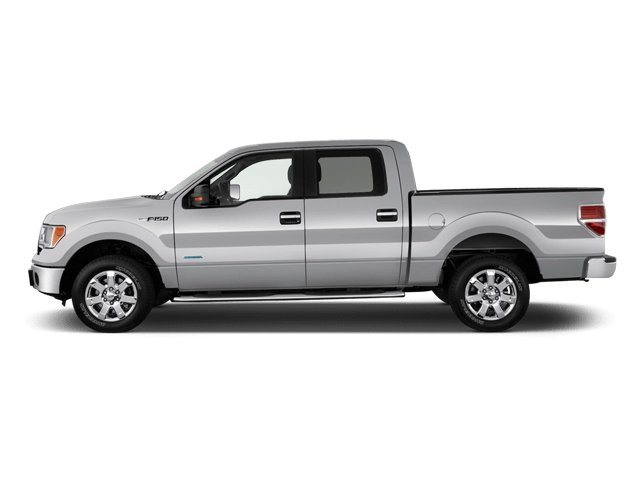2007 Ford F150 Owner's Manual

Table of Contents
2007 Ford F150 Overview
Introduction
The 2007 Ford F150 stands as a testament to Ford's commitment to producing reliable and powerful trucks that cater to both work and play. With a sleeker design and enhanced functionality, the F150 remains a popular choice among truck enthusiasts and everyday drivers alike. Its robust frame and varied configurations ensure that it meets a wide range of needs, from hauling heavy loads to providing a comfortable ride for the whole family.
Powertrains
The 2007 F150 offers an array of powertrains that showcase its muscular performance. The base engine is a 4.2-liter V6, generating 202 horsepower, catering to those seeking efficiency without compromising on capability. For those who crave more power, there's the 4.6-liter V8, delivering 292 horsepower, and a powerful 5.4-liter V8 that churns out an impressive 300 horsepower. Each engine is paired with a smooth-shifting 4-speed automatic transmission, providing seamless gear transitions and enhancing the driving experience.
Trims
This model comes in various trims, including the XL, STX, XLT, Lariat, King Ranch, and the formidable Platinum. Each trim offers distinct features and options, allowing buyers to customize their F150 to match their lifestyle. From the utilitarian XL aimed at workhorse duties to the upscale Platinum trim, which boasts premium materials and cutting-edge technology, the 2007 F150 caters to an extensive audience.
Features
The 2007 Ford F150 is equipped with an impressive array of features that prioritize comfort, convenience, and safety. Available options include advanced audio systems, Ford's SYNC technology for hands-free connectivity, power-adjustable seating, and premium leather upholstery in higher trims. Safety is a priority, with features like anti-lock brakes and available side airbags contributing to increased peace of mind while on the road.
Owner's Manual
The owner's manual for the 2007 Ford F150 provides crucial information on everything from routine maintenance schedules to detailed explanations of the truck's features and specifications. It serves as an invaluable resource for drivers, ensuring they maximize the longevity and performance of their beloved truck. With clear instructions and insightful tips, this manual is designed to enhance the ownership experience, making it easier to navigate the powerful capabilities of the F150.
User manual download
The Ford F150 owner manual for the 2007 model year is to be found in PDF downloadable format on this page. The owner manual for the model year 2007 is free and in English, but the repair manuals are usually not easy to get and may cost more.
Manual Questions
Fill the form below and someone will help you!

